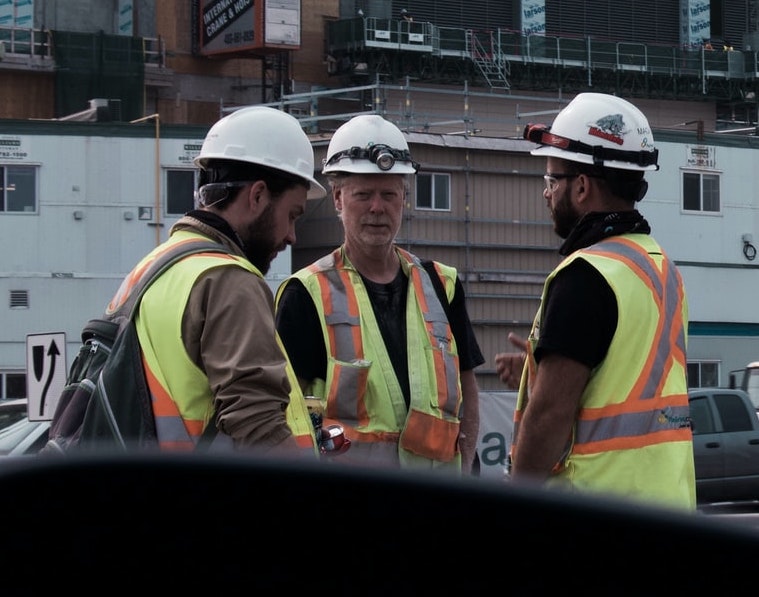Standardizing PPE for Landscaping Businesses

By Evelyn Long
Personal protective equipment (PPE) keeps people safe on the job site. PPE goes beyond simple things like masks — any part of the body that needs to be covered can be protected by the right safety gear.
In many lines of work, including landscaping, PPE is not only recommended, but required. If a landscaping business doesn’t require forms of PPE that align with the dangers workers experience, it’s doing everyone a disservice, and potentially endangering lives.
Why PPE is essential
PPE can cover everything from head to toe. What kind of PPE workers use will depend on the job they do, but they must protect themselves to be safe.
Around 98% of workers have been observed without proper PPE on occasion. Lacking PPE or choosing not to wear it opens people up to more risks of harming themselves and others when doing their jobs. Without PPE, employees risk getting hit by debris, inhaling toxins and more.
If workers advocate for being safe without PPE, employers should remind them they’re required by law to provide PPE in accordance with the hazards they may encounter on the job, as outlined by OSHA.
Companies are responsible for sanitizing equipment and ensuring PPE is functional. PPE must suit the job and be provided to workers. Managers must stress the importance of protecting themselves and others. They should understand just how crucial it is to defend against hazardous materials so people can stay happy and healthy.
Crucial PPE for landscaping businesses
All types of PPE can be useful, but the trick is figuring out what kind of protection workers need, and choosing an appropriate material to help keep them safe. Companies don’t need to provide every type of PPE for their employees, just those crucial to them doing their job safely.
Certain protective equipment comes in multiple forms, so it’s crucial to analyze which would be better for workers. For example, latex gloves wouldn’t do much to protecting hands from splinters, but they can work well when someone must handle dangerous chemicals.
Head protection
The head is arguably the most important part of the body to protect, so head protection is the most essential form of PPE if the job requires it.
Equipment like hard hats can protect employees in various ways. Head equipment can save workers from falling debris that could seriously injure them otherwise. It can also protect them from the sun’s rays on a sweltering day, making them less prone to heat exhaustion.
Gloves
There are typically two different types of gloves: latex and thick fabric. Latex gloves protect hands from spills or unintentional contact with chemicals. If people will be working with wood materials that take a lot of grip and have a risk of splinters, choosing gloves made of a thicker material can help. With thicker gloves, workers don’t have to worry about handling something delicately.
Reflective clothing
Having clothing that responds to light is especially important, considering some businesses work at night. Drivers must be able to see workers on the side of the road to avoid a tragedy. Reflective clothing can help by bouncing headlights back to drivers to let them know people are ahead.
Similarly, reflective clothing can keep the heat off the person who wears it, which minimizes the risk of heatstroke. Of course, the use of reflective clothing must be balanced with its relative weight. Finding garments that allow for airflow or have water-cooling properties can strike a good balance for landscapers in the sun.
Steel-toed footwear
Having the right shoes is essential when working with heavy materials. Proper footwear will offer protection from anything that could potentially be dropped on someone, saving them a world of pain. Having the proper tread on the bottoms of their shoes can also help workers keep their footing in a slippery or unstable environment.
Ear protection
Employees that operate machinery with loud noises should be outfitted with ear protection to muffle out some noise. If workers use anything that produces a sound louder than 85 decibels, they must have ear protection to safeguard their hearing. Working with power tools on a regular basis can cause hearing loss without the proper protection.
Safety goggles and eyewear
The need for safety goggles or glasses depends on the job. If managers are worried about solid debris flying into workers’ eyes, they should opt for safety glasses. Liquids, such as harmful chemicals that can splash in a person’s face, should be dealt with using goggles. Whatever the case, if people come into contact with dangerous chemicals in liquid form or as airborne dust, they should have some protection for their eyes.
Respirators
Respirators are best used around chemicals or other materials that could be harmful to a person’s respiratory system if inhaled for an extended period. Workers should not inhale too much dust or chemicals left behind from a demolition project. Dust and vapors can be dangerous, even though they may be small.
Make sure respirators fit workers individually. They should be snug but comfortable, like every other form of PPE. If the PPE doesn’t fit properly, they’ll risk exposure to harmful substances.
Make the most of PPE in landscaping
Job sites have come a long way from the days of old. People can do their work just as effectively with the proper protection. Workers will feel safer and more at ease knowing they’re covered if something goes awry.
Personal protective equipment isn’t a choice. It’s mandated by law, and for good reason: It can make a difference between a slight mishap and a tragic accident. Look out for workers, and provide them with the best PPE for the job.
Evelyn Long is a writer and editor focused on home building and construction. She is the co-founder of Renovated, a web magazine for the home industry.



